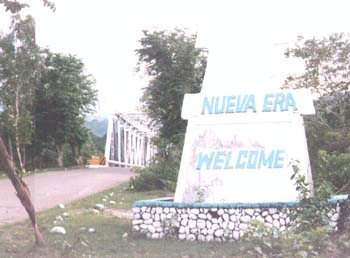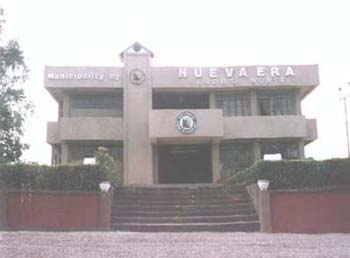

| Municipality of NUEVA ERA |

Nueva Era is one of the farthest towns of the province of Ilocos Norte. However, it can be reached by first class and second class roads. Situated on a hilly and mountainous area 46 kilometers southeast of Laoag City, it is bounded on south and southeast by the province of Abra, on the southwest by the province of Ilocos Sur and on the northwest by the town of Badoc, Pinili, Espiritu, Marcos, Dingras and Solsona, Ilocos Norte. The town of Nueva Era originated from, the nine rancheries of Padsan, Cabittauran, Paor- Patoc, Pagpagong, Bugayong, Uguis and Tibangran. These different rancheries were settled as early as 1572 when the Spaniards came to the northern part of the archipelago to spread Christianity. In the early days of each of the nine rancheries were under the independent control of a chief or president. The two rancheries of Paor and Patoc agreed to unite. The two chief made a letter to the provincial board of Ilocos Norte, requesting that the board approve their agreement to unite which was later considered. So Paor and Patoc were made into only one rancheria under one president.
In 1915, when all the chiefs of the nine different rancherias were called by the Provincial Governor of Ilocos Norte, the chiefs thought it is best for them to unite all their rancherias to form a town. So under the guidance of the provincial governor they passed a resolution requesting the governor general to grant them to form a town. In 1916, the governor general approved their resolution. He also ordered that the township be named Nueva Era because it was a town created in the New Year, thus the town came into existence. The population of the town is rather few because it is hilly and mountainous. At the time it was chartered as a town, there were only about 800 people. But due to the immigration of some Christians from the towns of Batac, Badoc and other towns as well as non-Christian tribes from the province of Abra and Ilocos Sur, the population became bigger. The inhabitants speak what they call Tinguian dialect mixed with the Ilocano dialect. They have sing-song intonation putting too much emphasis at the end of their sentence. The Tinguians have peculiar characteristics. The women wear beads around their arms, neck and heads. Their hair is parted at the middle. They believe in "anitos" that in order to free the town from sickness or disease they have what they call "pacder". At the entrance of the barrio or the town, they build a little house where to place off-spring of coconuts, grains of rice, pieces of meat, etc. In order to cure their patients they perform the "aropag" and the offering of sacrifice made by old woman who act as their priest. The women dance the Aropag and speak with the anitos to ask help from them to save the life of a sick person. Most of the people were engaged in agriculture, practicing crop rotation or the alternate way of planting different crops. Rice is raised as the principal crops for subsistence and for sale, and corn is the second art crops. There are very few farmers who plant sugarcane, because the soil very suited to it. Likewise, few are hunters, fisherman, manufacturers and lumberman, home industries, like woman does the mat weaving and basketry during their free hours. There are potential profitable industries because the town has a thick forest. But it is products are not fully used, because the people do not have enough capital. Mineral resources like gold, steal and crystal can be found under the rolling verdant hills. If these resources are developed, Nueva Era can became a progressive municipality. The people of Nueva Era recognize the value of education. Many of them become professionals. Parents are now encouraged to send their children to schools for higher education. |






